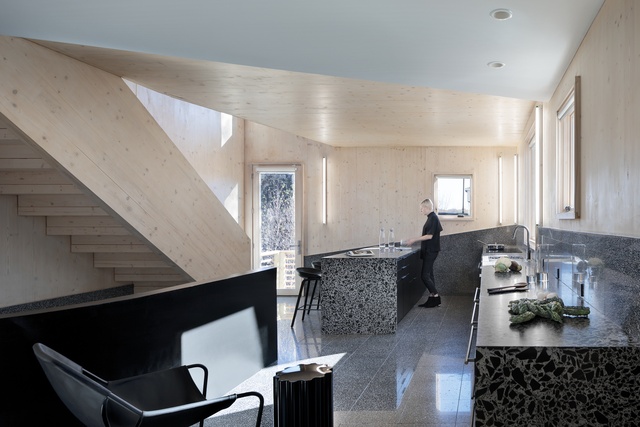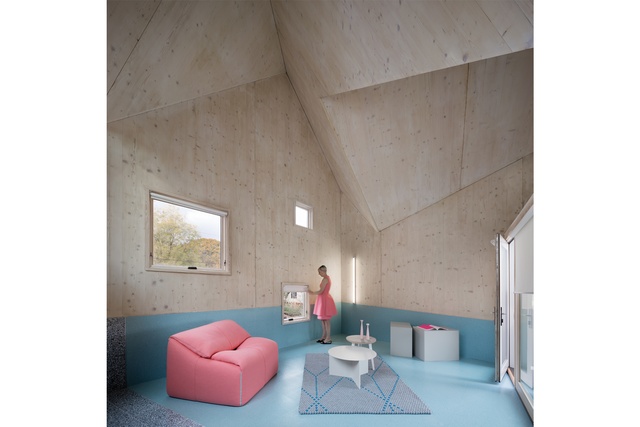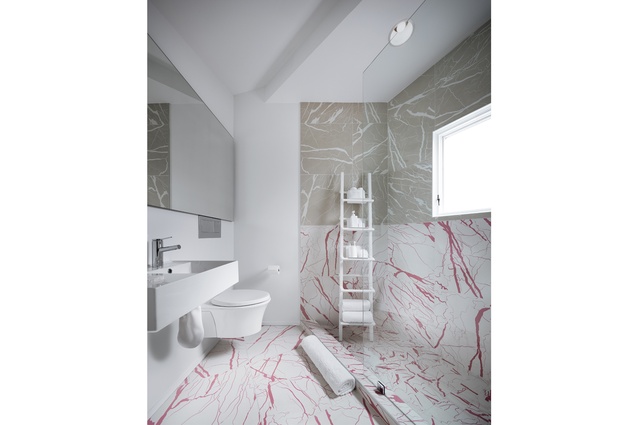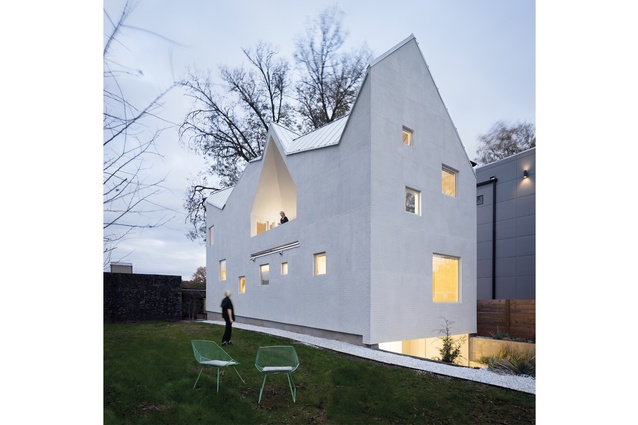Hot House: Haus Gables
Atlanta’s Haus Gables is high and low brow, quotes modernism and pop culture, and is functional yet intensely sculptural. Yet, best of all… it is tonnes of fun.
Architecturally designed houses are often built to play a public role that goes beyond the simple boundaries of practicality. They are constructed as monuments – sometimes subtle, sometimes clumsily pretending to be so and sometimes blatant – to either wealth, history, aspiration, affiliation or a love for the surrounding landscape. These are symbols with which a house can cloak you.
Sometimes, however, buildings come along that manage to critique those ulterior motives in architecture, not as a way to debase them but as an attempt to challenge old habits that have become communal vices.
Atlanta’s Haus Gables, by American architect Jennifer Bonner, is one such place.
The structural materials here are radically new for its location. Its roof plan and interior finishes can be interpreted as direct statements about its surrounding architectural stock; its design and construction are both methodical and undeniably robust.

This two-bedroomed, 200m2 house was built from the top down, its roof made not just to inform but to define the interior spaces.
It all began with the architect noticing and documenting the fact that Atlanta’s residential landscape is dominated by gable roofs. She then deconstructed the typology into a series of mad, origami-like undulations where the pitches have been exaggerated, their forms rotated at various angles and sliced asymmetrically. Even the balcony here appears as though a gable has imploded or been used as a mould to create a nook.
At first sight, the house could be confused for belonging to another location; its interior is Scandinavian in colouration, its exterior Japanese with a touch of Le Corbusier. But, as Bonner mentions: “ultimately, the house critiques the American single-family house through both image and construction technique. Because the initial research for the design of the house began with the ordinary roof forms, the idea was to challenge one’s reading of the house and its iconic gable pitch.”
The roof, however, is more than just an academically inclined hat for a doll’s house. Once lifted, it reveals spaces entirely defined by those gables. The kitchen’s orientation, the narrow dining area, a passageway that behaves like a bridge… these are all forms imprinted in the home’s interior by a roof plan inspired by the city that surrounds it. The public and the private spheres intertwine in intricate and beautiful forms.
Another subtle clue to the fact that this home belongs within its context is in its usage of faux materials.
The exterior, for instance, is made from stucco, which has been mixed with glass beads to give the façade a certain shimmer in the sunlight. It has been applied in a way that pretends to be brick and is a continuation of Bonner’s (and artist John Baldessari’s) earlier, conceptual work looking at Mies van der Rohe’s usage of brick as a decorative rather than a structural material.

It is in the home’s interior, however, where the faux extravaganza really kicks in. Bonner: “The faux finishes was partly an idea for mixing more luxurious materials, such as ceramic and terrazzo tiles, with inexpensive materials like vinyl flooring. The project undertakes an old tradition of faux-finishing. For Southerners, there is a history of not being able to afford precious materials with a subsequent desire to ‘fake it’.”
The materiality here serves not just as a highly instagrammable addition (yes, millennial pink makes a couple of cameo appearances) but as colour-blocking, creating imaginary subdivisions within the timber-heavy space. “On the first level, grey (concrete vinyl), yellow (marble vinyl) and black (terrazzo tile) can be seen by standing in the master bedroom and looking through the dining room and into the kitchen at the back of the house,” says Bonner.
Haus Gables was built in 14 days and almost entirely from 87 cross-laminated timber (CLT) panels. The materiality and construction method is quite new in the United States and, given the complex angles here, the core material needed to be imported from Austria, its construction pre-approved by four separate engineers. “Beyond all of the sustainable aspects,” says Bonner of CLT, “of no waste product, thermal benefits, solid construction, etc., CLT offers an alternative for the US market, whose primary image of the domestic interior relies on drywall.”
So, with all this conceptual, aesthetic and practical baggage, what, one may ask, will the house’s main legacy be?
“For me, the house is a proof-of-concept: a radical experiment,” says Bonner. “Hopefully, it will ‘disrupt’ the way in which the industry builds residential projects in the near future.”
Click here to read an interview with Jennifer Bonner.
This article first appeared in Urbis magazine.















